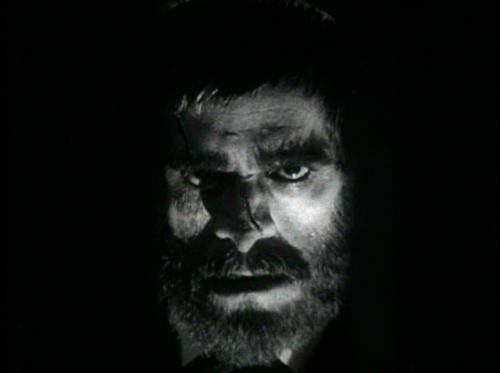
by Jaime Grijalba
“Fixing a Hole” is a new series whose sole purpose is to review films that have not yet been covered on Wonders in the Dark. The theme for October is “Universal Horror.” Some spoilers are discussed below.
While Joel has selected all the titles, certain films have been assigned to guest writers. This week, Exodus 8:2‘s own Jaime Grijalba digs up the two Draculas: the English- and Spanish-language versions, shot simultaneously in 1931.
•
Dracula (1931/United States/directed by Tod Browning)
stars Bela Lugosi, Dwight Frye, Edward Van Sloan, Helen Chandler, David Manners
written by Louis Bromfield, Tod Browning, Max Cohen, Dudley Murphey, Louis Stevens from the play by Hamilton Deane, John L. Balderston, Garret Fort from the novel by Bram Stoker • photographed by Karl Freund • designed by Charles D. Hall, John Hoffman, Herman Rosse • no music • edited by Milton Carruth
The Story: On a dark and stormy night, an Englishman arrives at a gloomy castle in Transylvania and meets Count Dracula, who would like to invite him for a drink.
•
Drácula (1931/United States/directed by George Melford)
stars Carlos Villarías, Pablo Álvarez Rubio, Eduardo Arozamena, Lupita Tovar, Barry Norton
written by B. Fernandez Cue, Dudley Murphey from the play by Hamilton Deane, John L. Balderston, Garret Fort from the novel by Bram Stoker • designed by Charles D. Hall • music by David Broekman • edited by Andrew Cohen
The Story: En una noche oscura y tormentosa, un inglés llega a un lúgubre castillo en Transilvania y cumple con el Conde Drácula, a quien le gustaría invitarlo a tomar una copa. (Forgive the Google translation! – Joel)
_____________
‘I am Dracula’/’Yo soy Drácula’
The only survivor of a practice that was more common than anyone would admit, Drácula, the Spanish version of the Tod Browning film Dracula, is also from 1931, filmed at the same time with the same sets and the same script, but with different actors, directors, DP’s, everything. Universal, of all the studios, used to do this all the time, not to expand the film to foreign Spanish-talking regions (that was more of a consequence) but more to appease the growing Latino population that began not only to populate the United States. And also to compensate with work the many Latino-related actors and actresses that came to Hollywood to find a work and a way to shine in the movies, even if they didn’t really speak any English, which I don’t know if it’s the case of this particular case, but I’m pretty sure there are some who are.
Anyway, back to the films. Dracula may be one of the most famous movies in the world, much like Frankenstein, because you don’t need to actually see it to know what it’s about. You can sometimes predict what the acting, the framing, the sets and all the little details will be: countless parodies, remakes and maybe a genetic memory have been important when we give this film the status of legend. Maybe it’s Lugosi, or Browning, or Frye, or who knows what it is, maybe the cinematography has something familiar that resonates with us when we see it for the first time, as if it were a world that we already know, but that we longed to return to, a film that has always played in our minds until we see it for the first time, and that’s when the film will start playing in your heart.
(more…)
Read Full Post »

































 Click on names for archives
Writers/Founders
Click on names for archives
Writers/Founders